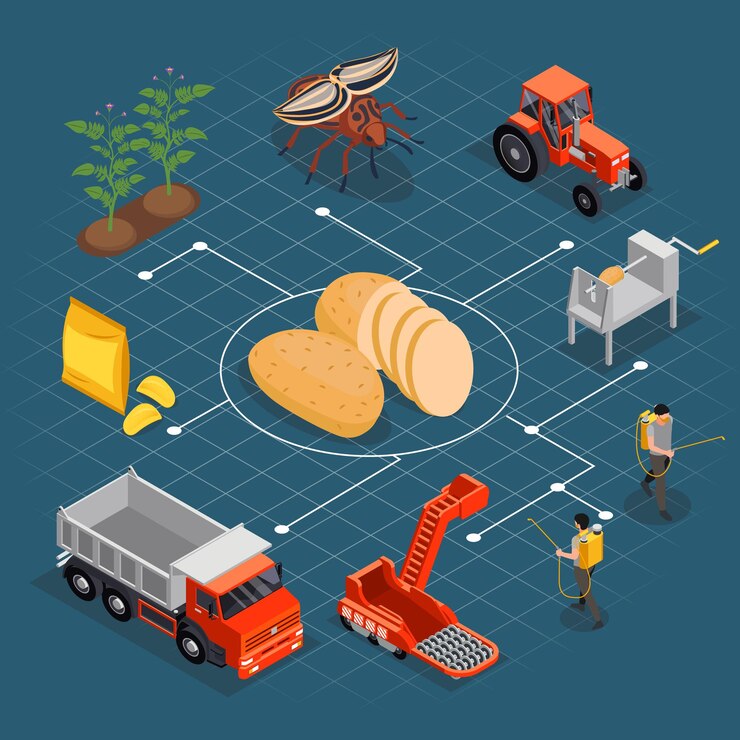Embarking on the journey of agriculture commodities is not just a venture into farming; it’s a foray into a dynamic and essential sector that plays a pivotal role in feeding the world. This blog serves as a comprehensive guide, from the initial steps of choosing crops to the final stages of bringing them to market.
*1. Selecting the Right Crop:
Choosing the right crop is the cornerstone of agricultural success. Factors like climate, soil type, and market demand should guide your decision. Researching current market trends and understanding consumer needs can help you make an informed choice.
2. Land Preparation:
Prepare the land carefully to ensure optimal conditions for your chosen crops. This includes soil testing, proper irrigation planning, and addressing any potential pest or disease concerns. Well-prepared soil sets the stage for a fruitful harvest.
3. Sowing the Seeds:
Timing is crucial when it comes to planting. Follow recommended planting schedules for your region and crop. Pay attention to seed depth, spacing, and the use of quality seeds to give your crops the best start.
4. Crop Maintenance:
Regular monitoring and maintenance are key throughout the growing season. This involves tasks such as weeding, pest control, and ensuring proper irrigation. Stay vigilant to any signs of diseases or nutrient deficiencies and address them promptly.
5. Harvesting:
Harvesting at the right time is critical for quality and yield. Different crops have varying signs of readiness, so familiarize yourself with these indicators. Use proper harvesting techniques to minimize damage and ensure the best possible product.
6. Post-Harvest Handling:
The journey doesn’t end with harvesting. Post-harvest handling is crucial to preserve the quality of your agricultural commodities. Proper storage, transportation, and processing (if applicable) are vital steps to avoid spoilage and maintain market value.
7. Market Research:
Before bringing your agricultural commodities to market, conduct thorough market research. Understand pricing trends, consumer preferences, and potential buyers. Building relationships with local markets, distributors, or even exploring direct-to-consumer channels can enhance your market reach.
8. Marketing Strategies:
Craft effective marketing strategies to showcase your agricultural commodities. Utilize digital platforms, farmer’s markets, or collaborations with local businesses to promote your products. Highlighting factors like organic practices or sustainable farming methods can attract environmentally conscious consumers.
9. Compliance and Regulations:
Ensure compliance with agricultural regulations and standards. This includes labeling, certifications (such as organic certification), and adherence to any regional or international guidelines. Meeting these standards boosts consumer trust and opens doors to wider markets.
10. Continuous Learning:
Agriculture is a field that constantly evolves. Stay informed about new farming techniques, technological advancements, and market trends. Continuous learning will not only enhance your productivity but also position you as a forward-thinking contributor to the agricultural community.
Conclusion: Cultivating a Prosperous Future
Embarking on the journey of agricultural commodities is both a challenge and an opportunity. By following these steps, you lay the groundwork for a successful venture that not only sustains your livelihood but contributes to the global need for quality, responsibly produced food. From the first seed planted to the final product reaching consumers, each step plays a vital role in the intricate dance of agriculture commodities. May your fields be bountiful, and your agricultural endeavors flourish.




